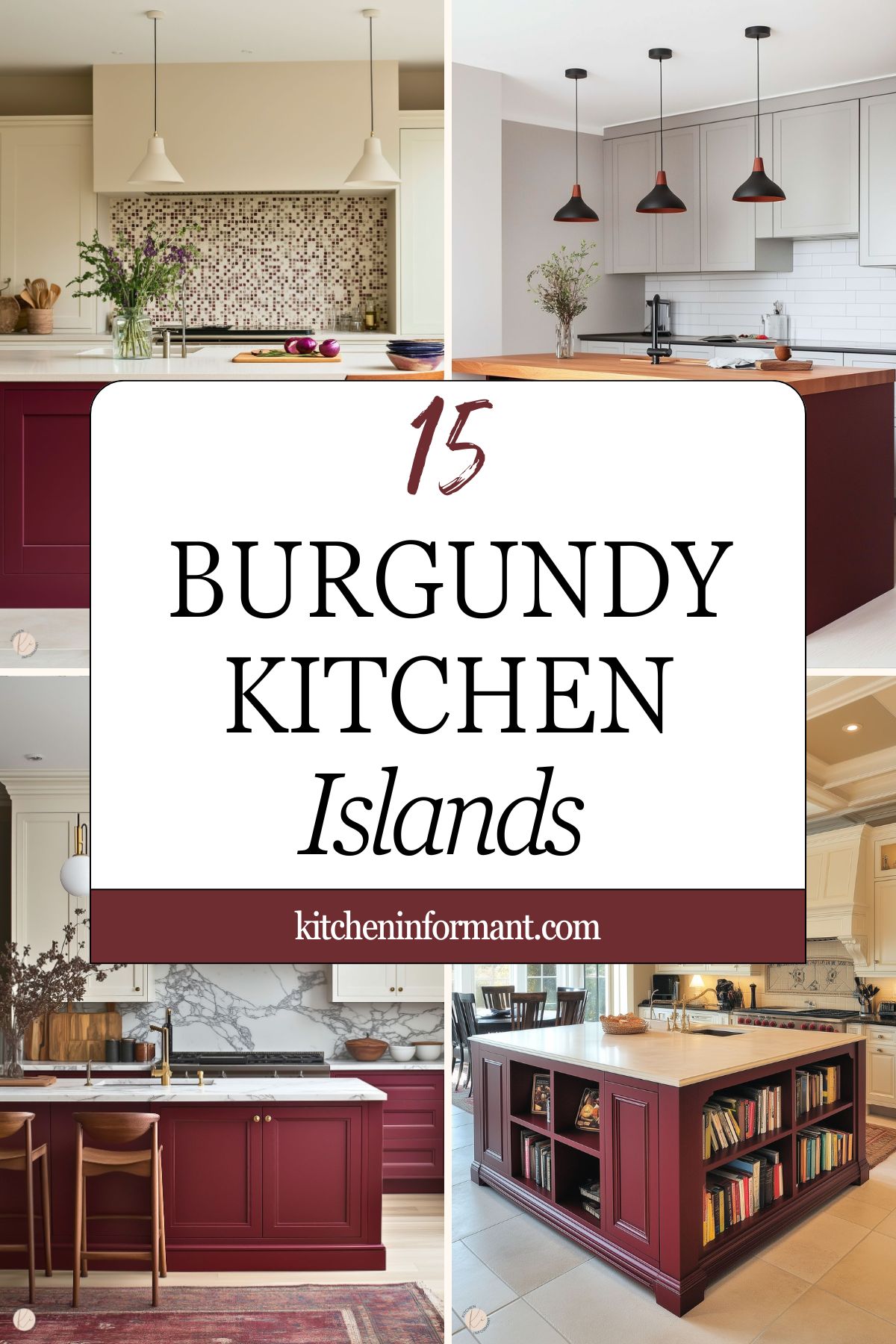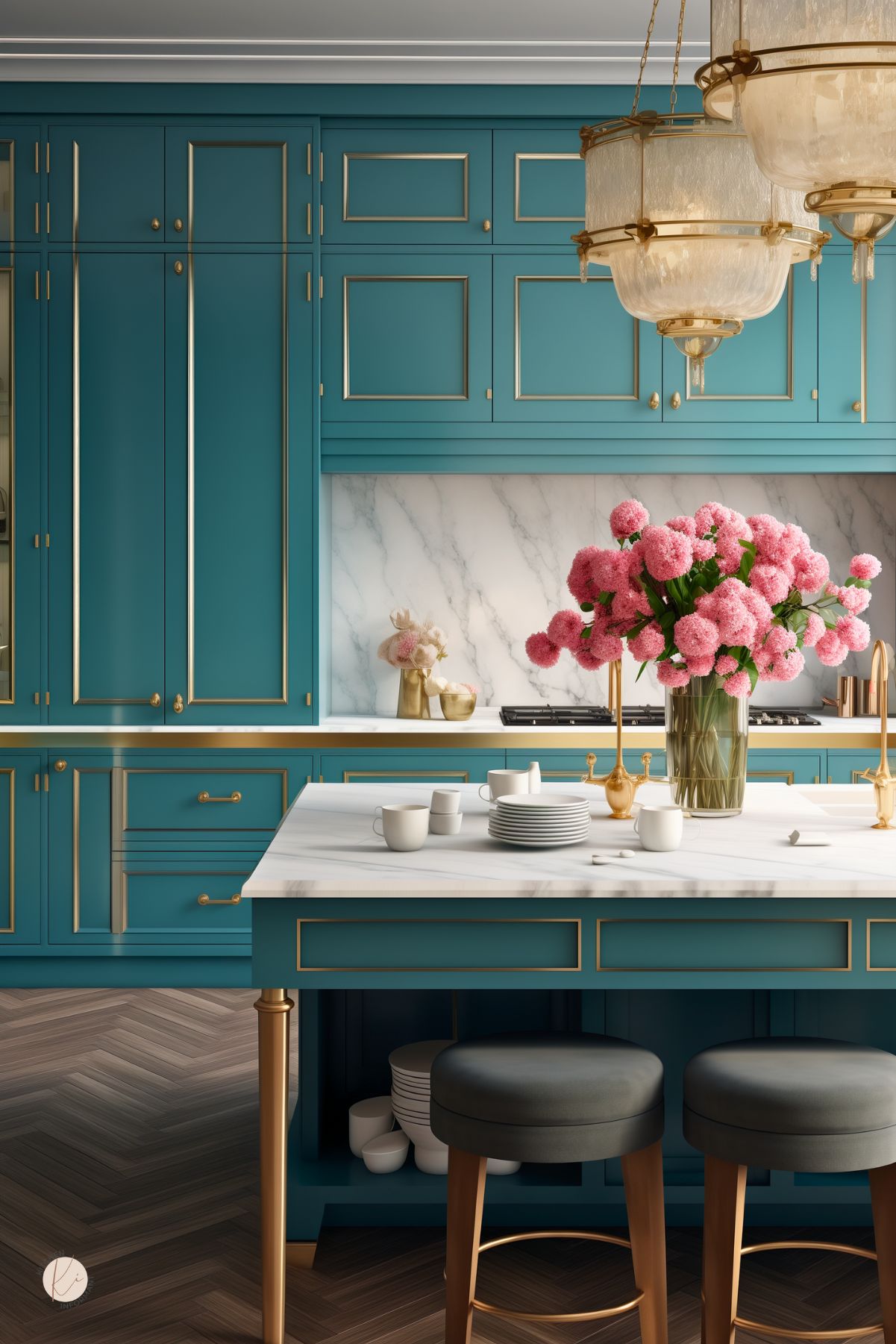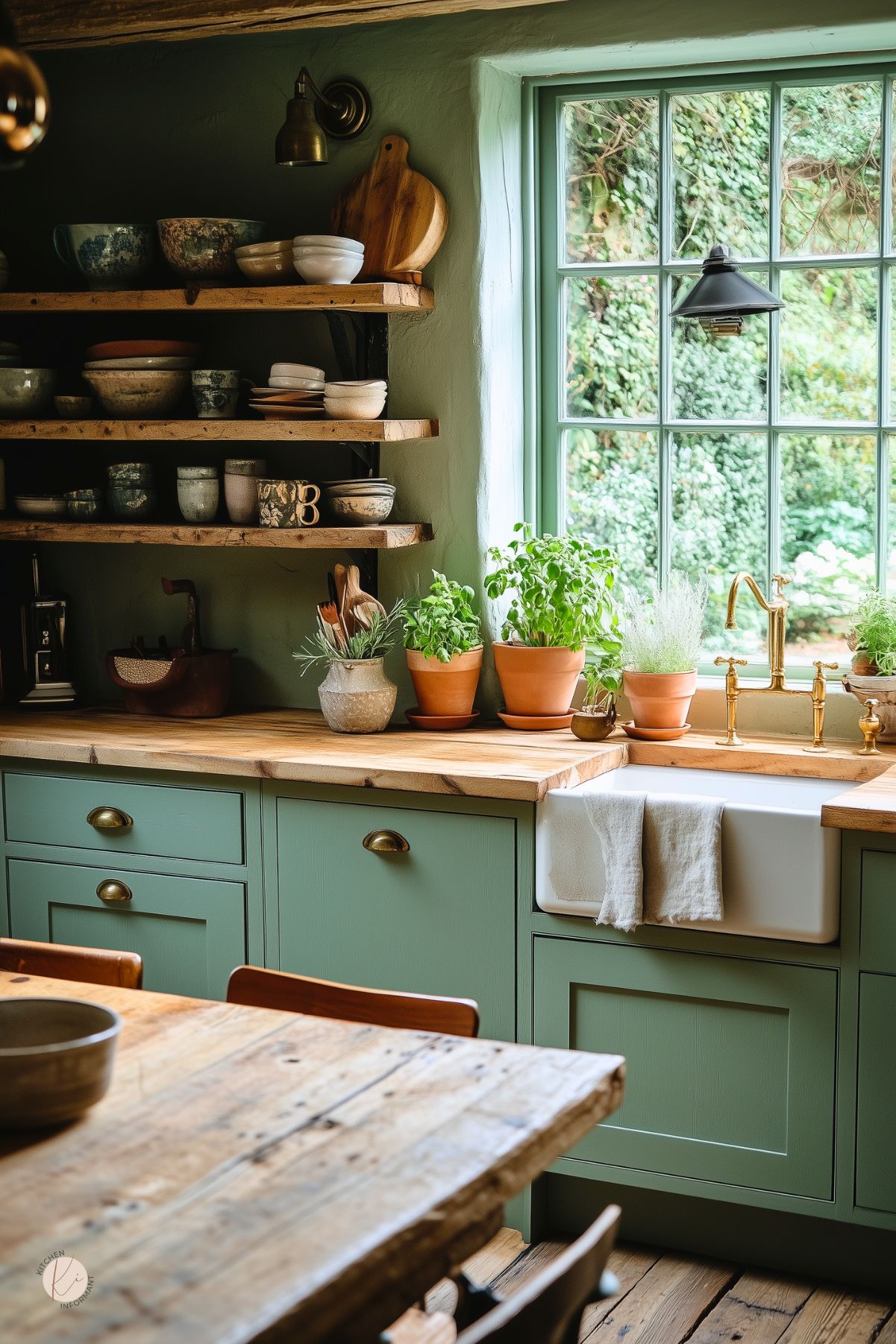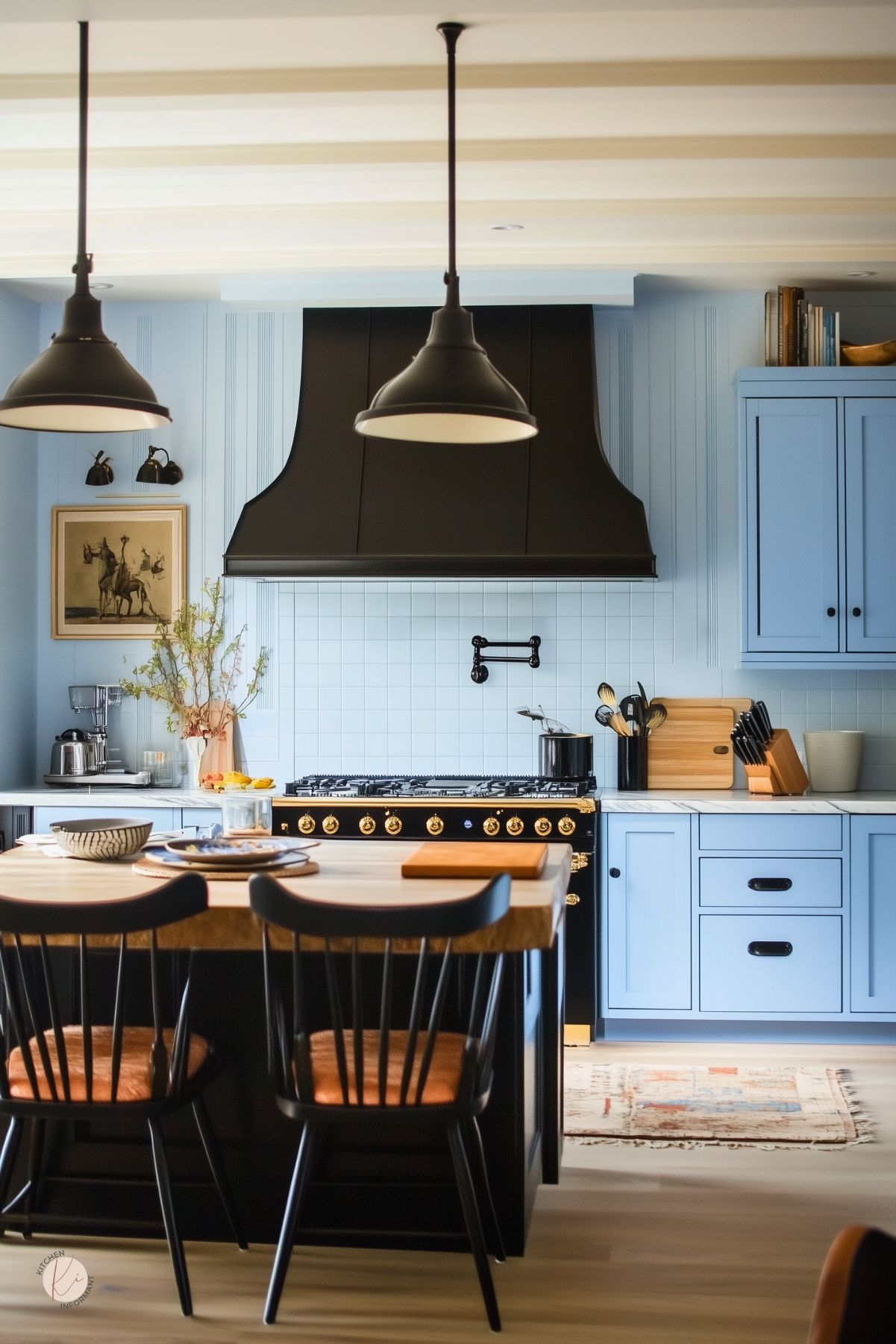Burgundy kitchen islands are a striking choice that can transform any kitchen into a stylish space.
These islands not only add a rich pop of color but can also serve as the centerpiece of the kitchen, blending functionality with elegance.
A well-designed burgundy island can enhance the overall look, balancing warm tones with the surrounding decor.
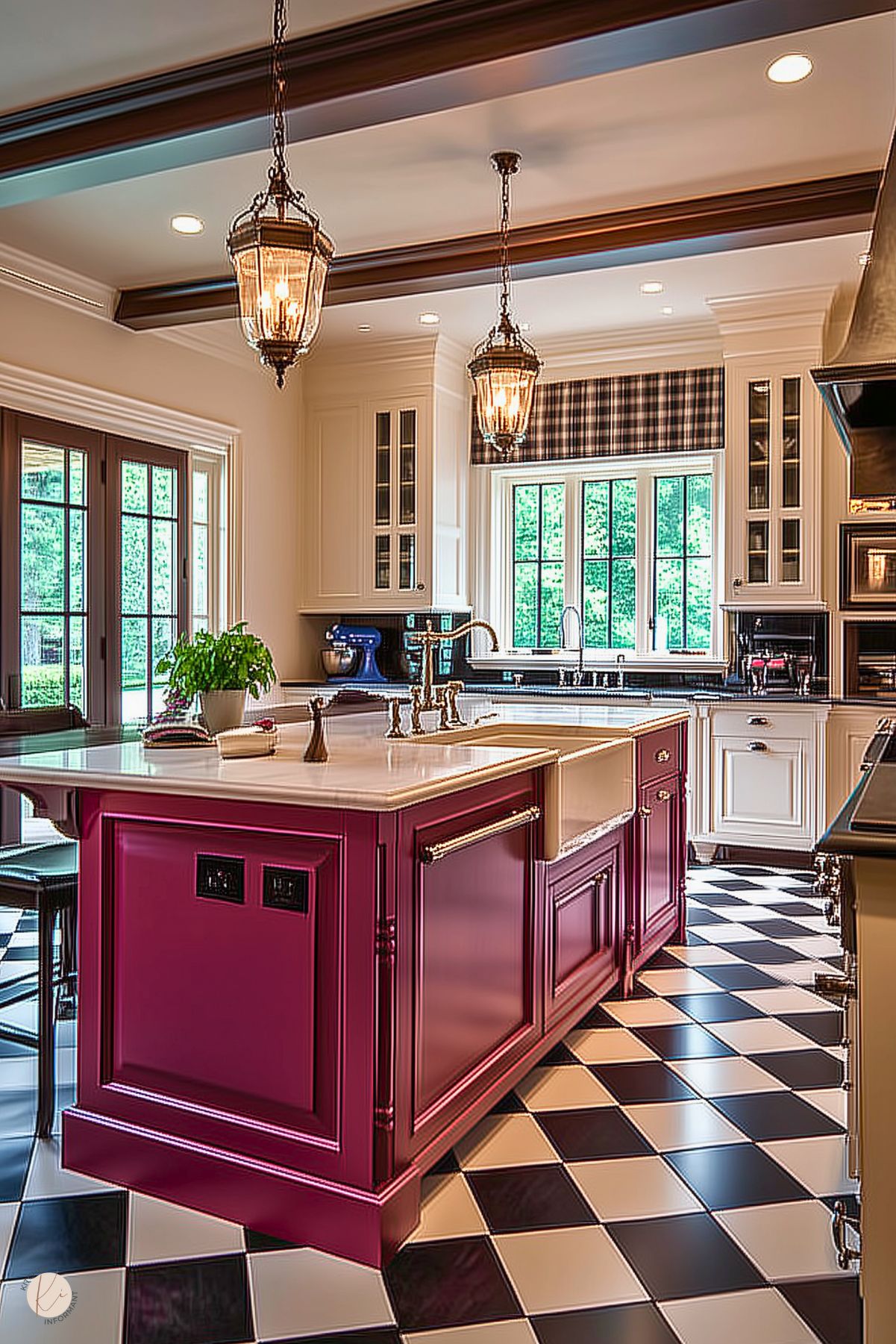
The versatility of burgundy allows it to pair beautifully with various materials, from natural wood to sleek marble. This color brings warmth and depth, making it perfect for both modern and traditional kitchen designs.
Many homeowners choose burgundy to create a cozy yet sophisticated atmosphere, showing off their unique style.
Adding a burgundy kitchen island is more than just a design trend; it’s a way to express personality and create a welcoming space. Whether someone opts for a bold full island or a subtle accent, the impact of this color is undeniable.
You will find plenty of inspiration and ideas to elevate their kitchens with these stunning burgundy islands.
The Charm of Burgundy in Kitchen Decor
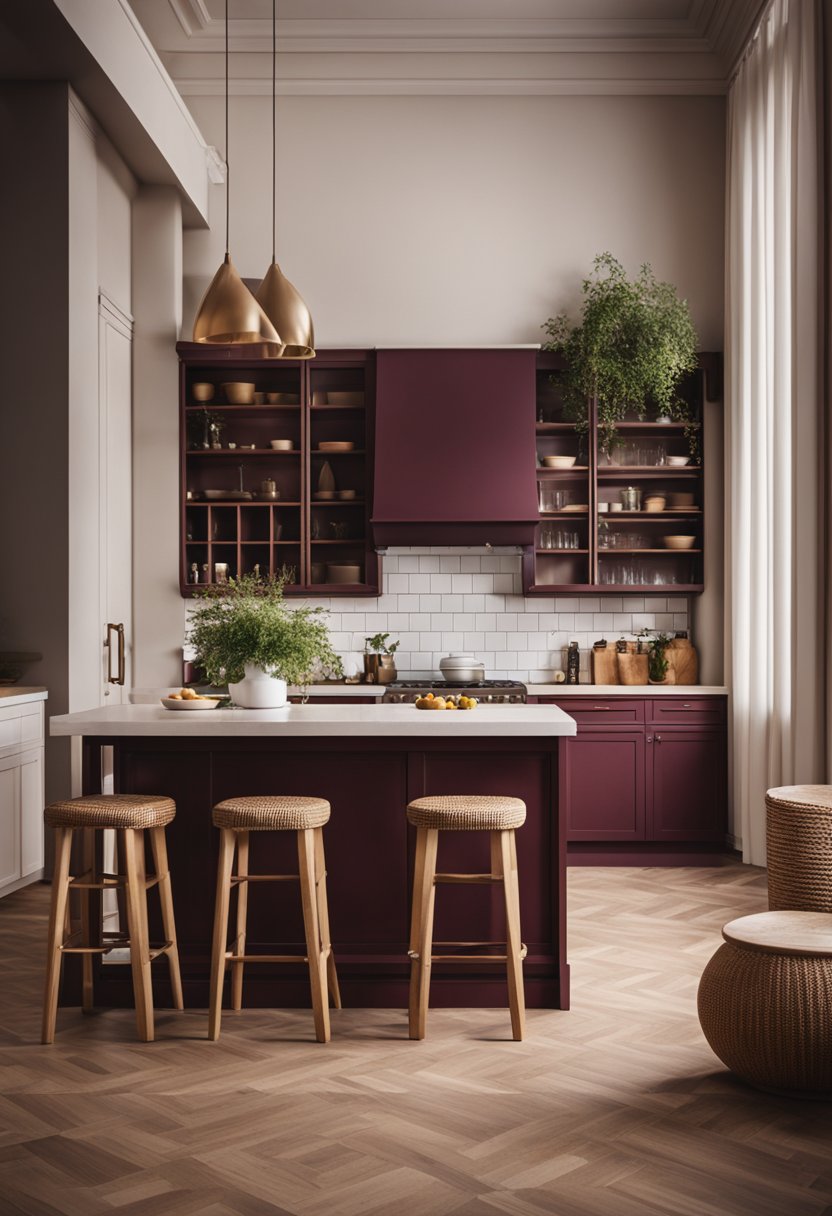
Burgundy brings a unique charm to kitchen decor, offering a balance of warmth and sophistication.
Its rich hue can evoke feelings of comfort and creativity, making it a popular choice for kitchen islands and other decor elements.
Color Psychology of Burgundy
Burgundy is not just a pretty color; it carries significant psychological impact. This deep red hue is known to inspire passion and promote a feeling of coziness.
Using burgundy in a kitchen can create an inviting atmosphere. It works well to stimulate appetite and conversation, making it ideal for spaces where families gather.
Incorporating shades such as burgundy cabinets or an island can enhance these feelings. It also pairs beautifully with neutrals, allowing for a balanced visual palette.
Burgundy’s Versatility in Interior Design
Burgundy is incredibly versatile, fitting into various design styles. It can complement modern, rustic, or traditional aesthetics without overwhelming the space.
For a contemporary look, it might be used in sleek cabinetry alongside glossy surfaces.
Or in a farmhouse kitchen, it could be a charming island or accent wall, providing a warm contrast to white or light wood tones.
Combining burgundy with colors like cream, gold, or soft blues elevates a kitchen’s elegance.
It can create a stunning focal point while maintaining a cohesive feel in the room. From subtle touches to bold statements, burgundy offers endless possibilities in kitchen decor.
Planning Your Burgundy Kitchen Island
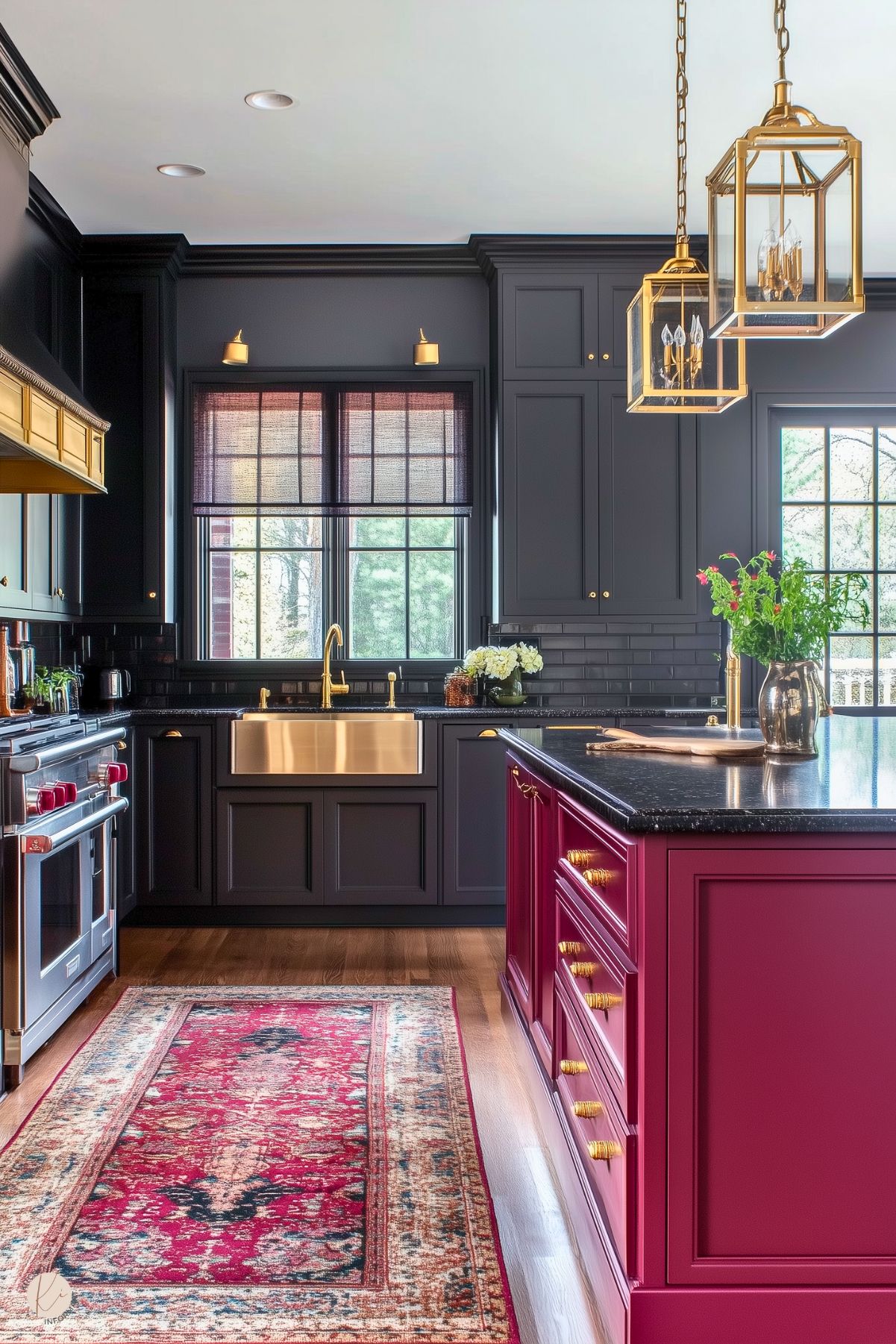
Planning a burgundy kitchen island requires attention to several key details.
These include selecting the shade, choosing suitable materials and finishes, and determining the right size and placement in the kitchen.
Each decision contributes to the island’s functionality and aesthetic appeal.
Selecting the Right Shade
Choosing the perfect shade of burgundy is crucial. Different shades can evoke various moods and styles.
For example, a deep, dark burgundy offers a rich, elegant look that can make the kitchen feel warm and inviting.
Alternatively, a lighter burgundy or one with red undertones can feel more vibrant and modern.
Tips for Selecting the Shade:
- Consider the existing color palette in the kitchen.
- Test samples with kitchen lighting to see how it looks at different times of day.
- Match the burgundy with complementary colors like neutral whites or soft grays.
Materials and Finishes
The choice of materials and finishes impacts durability and style.
Common materials for kitchen islands include wood, laminate, and stone. Each provides a different look and feel.
- Wood: Offers a warm, natural appearance. Stained burgundy wood can create a classic look.
- Laminate: Available in various colors and patterns. It’s a cost-effective choice that’s easy to maintain.
- Stone: Adds elegance and durability. A granite countertop with burgundy veins enhances the overall design.
Finishes also play a role. A glossy finish adds shine, while a matte finish gives an understated elegance.
Island Size and Placement
The size of the island should match the kitchen’s layout and purpose. A larger island provides more workspace and can serve as a gathering point, while a smaller island may work better in compact kitchens.
Considerations for Size:
- Ensure at least 36 inches of space around the island for easy movement.
- The island should not obstruct traffic flow or appliance access.
Placement is equally important. Central positioning encourages cooking and socializing, while a side placement may serve better for prep work.
A thoughtful approach ensures the island is both functional and visually appealing.
Incorporating Burgundy Islands into Various Kitchen Styles
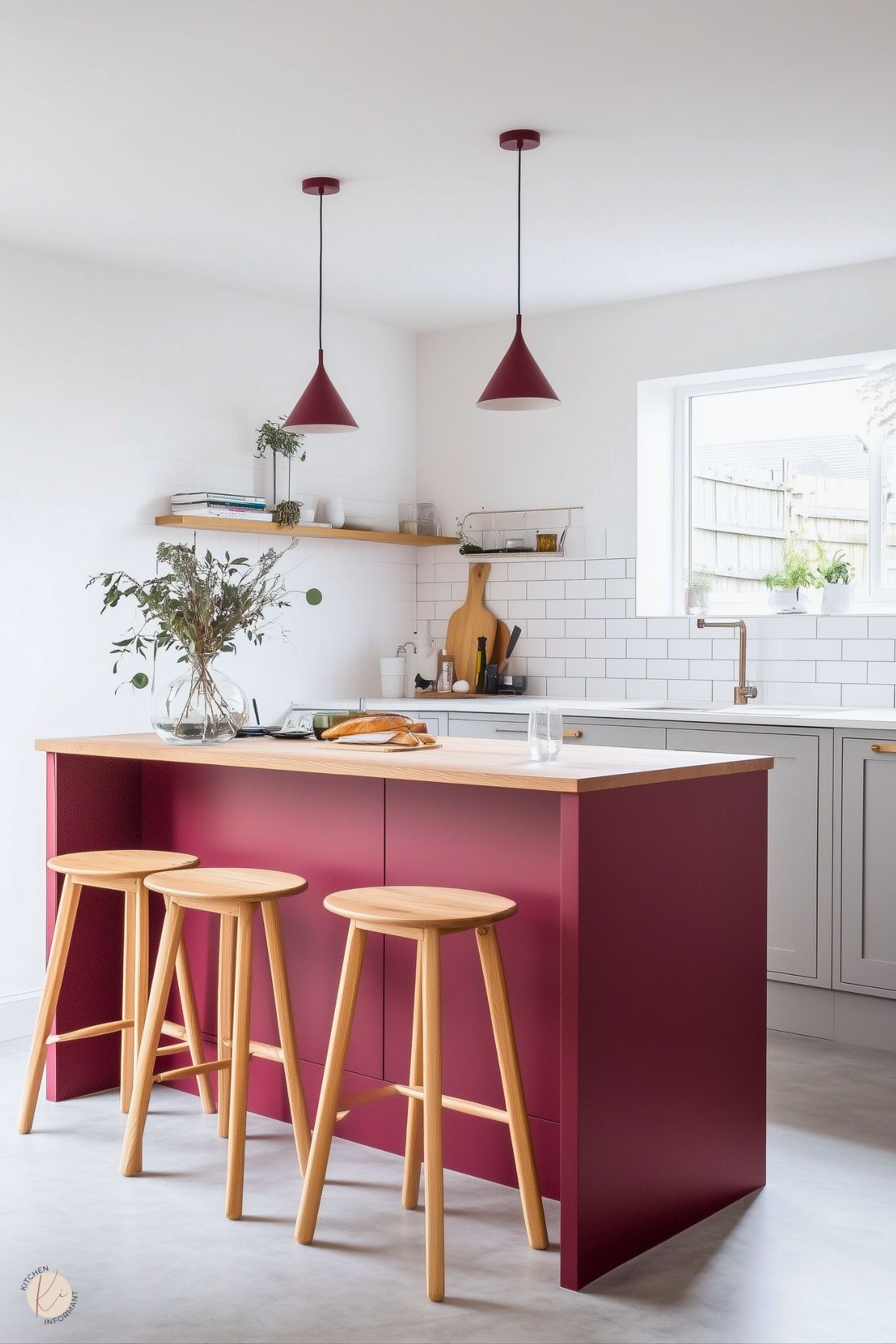
Burgundy kitchen islands can enhance a variety of kitchen styles. They serve as a focal point, adding warmth and elegance.
Below are ideas on how to seamlessly integrate a burgundy island into different kitchen designs.
Modern and Minimalist Kitchens
In modern kitchens, a burgundy island can add a bold contrast to sleek, white cabinetry. Choosing a simple, streamlined design for the island helps maintain minimalist aesthetics.
Consider using a flat surface with clean lines and minimal embellishment.
To maximize the modern look, pair the island with neutral tones in the rest of the space. Light gray walls and stainless steel appliances enhance the appeal.
Adding minimalist bar stools in metal or transparent materials can complete the design.
Key features of this style include:
- Clean Lines: Avoid intricate designs.
- Neutral Accents: Use light colors alongside burgundy.
- Functional Decor: Opt for practical additions like storage solutions.
Traditional and Rustic Kitchens
In traditional kitchens, burgundy islands can evoke a sense of classic charm.
Wooden cabinetry and warm wood flooring work perfectly with the richness of burgundy. An island with a distressed finish can provide a rustic touch that feels inviting.
Adding decorative elements like crown molding and vintage-style knobs pairs beautifully with burgundy. Warm lighting, such as lantern-style fixtures, can further enhance this cozy vibe.
Design tips for this style might include:
- Use of Warm Colors: Combine with shades like cream or beige.
- Natural Materials: Incorporate wood and stone for a rustic feel.
- Classic Accessories: Vintage cookware or rustic baskets can add character.
Eclectic and Transitional Kitchens
For eclectic or transitional kitchens, a burgundy island acts as a colorful centerpiece. Mixing patterns and textures creates visual interest.
Pairing the island with various styles, such as modern and rustic, makes the kitchen unique.
Consider bold wallpaper or open shelving to display curated items.
The key is to balance the burgundy with complementary colors. Accent with metallic finishes or colorful decor pieces for added flair.
Integrating a burgundy island is a fun way to highlight any kitchen design while bringing warmth and sophistication.
Lighting and Accessories for Your Burgundy Island
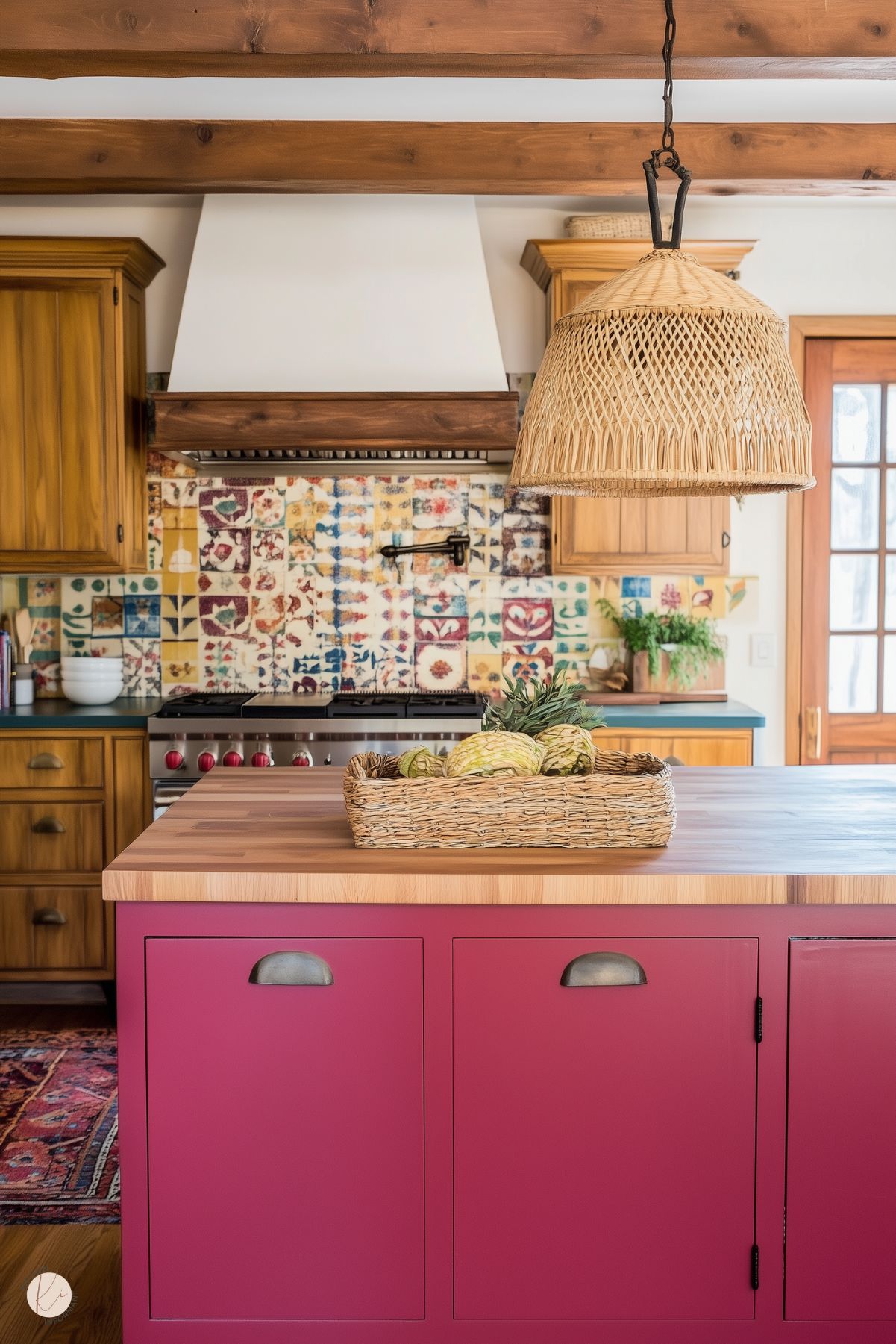
Creating the right ambiance around a burgundy kitchen island is essential. Thoughtfully chosen lighting and accessories can enhance its beauty and functionality.
Here are some key tips to consider.
Choosing Complementary Lighting
When selecting lighting for a burgundy kitchen island, choose fixtures that highlight its bold color.
Pendant lights are a popular option. They can add charm and draw attention to the island.
Consider these tips:
- Material Matter: Fixtures made from metals like brushed gold or matte black can create a striking contrast.
- Shape and Size: Choosing bold, geometric shapes can add modern flair. Ensure the size of the fixture fits the scale of the island.
A light dimmer can also enhance versatility, allowing adjustment based on the time of day or occasion.
Warm white bulbs can create a cozy atmosphere, making the kitchen feel inviting.
Styling with Accessories and Bar Stools
Accessories can elevate the overall look and function of a burgundy kitchen island.
Start with bar stools that complement the island’s color. Neutral tones like beige or gray work well. They provide balance against the rich hue.
Key accessories to consider:
- Decorative Bowls: A stylish bowl can serve as a centerpiece. Choose a neutral or metallic finish to complement the burgundy.
- Textiles: Use placemats or table runners that incorporate colors from the island. This creates harmony.
Mixing textures such as wood and ceramics can also add depth to the design.
Accessories not only make the space functional but also add personality and warmth.
Countertops and Backsplashes to Complement Burgundy Islands
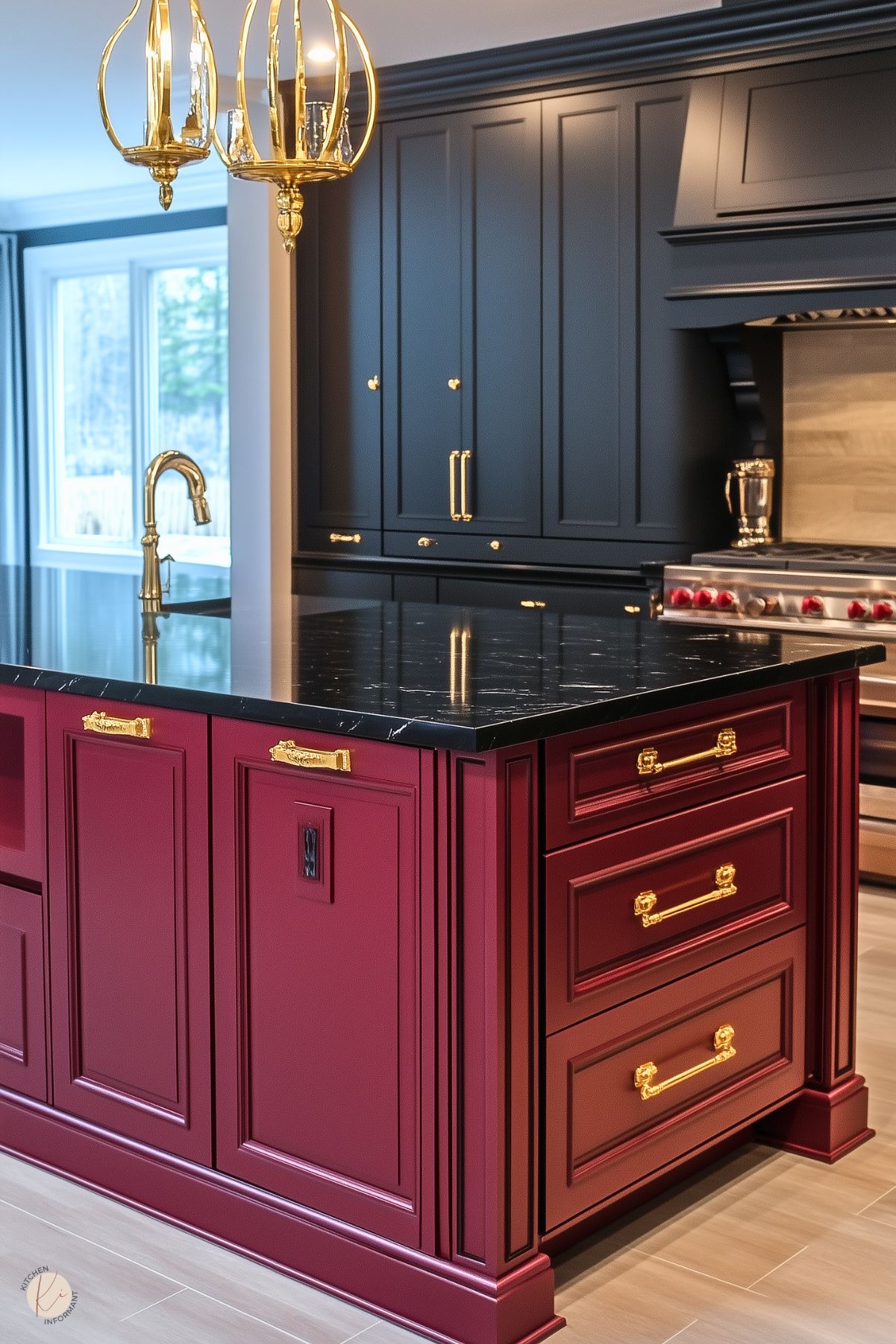
Choosing the right countertops and backsplashes can enhance the beauty of a burgundy kitchen island.
The goal is to find materials that either contrast with or complement the rich color of burgundy. Options vary widely, allowing for personalized styles.
Natural Stone Options
Natural stone brings elegance to a kitchen. Popular choices include granite and marble.
- Granite: This durable material comes in various shades. Light gray or cream granite with subtle veining works well with burgundy. The contrast helps make the island a focal point.
- Marble: For a luxurious feel, white marble or pale cream with burgundy veining can highlight the richness of the island. The natural patterns add texture without overpowering the design.
- Soapstone: This option can provide a softer look. Its warm surface complements the boldness of burgundy while staying practical with its heat and stain resistance.
Natural stone options offer both functionality and beauty in a kitchen setting.
Synthetic and Tile Alternatives
For a more budget-friendly or varied design, synthetic materials and tiles can be great choices.
- Quartz: This engineered stone mimics the look of natural stone but is more affordable. It comes in many colors. A light-toned quartz can enhance the warmth of a burgundy island effectively.
- Laminate: Colorful laminates can include burgundy accents. They are easy to clean and come in many designs, allowing for creativity that matches the island style.
- Ceramic Tiles: Glazed ceramic tiles offer durability. They are available in various colors and patterns. A simple white or subtle patterned tile backsplash can draw attention to the kitchen island without clashing with the darker tones.
Combining the right materials will create a harmonious look that highlights the burgundy island.
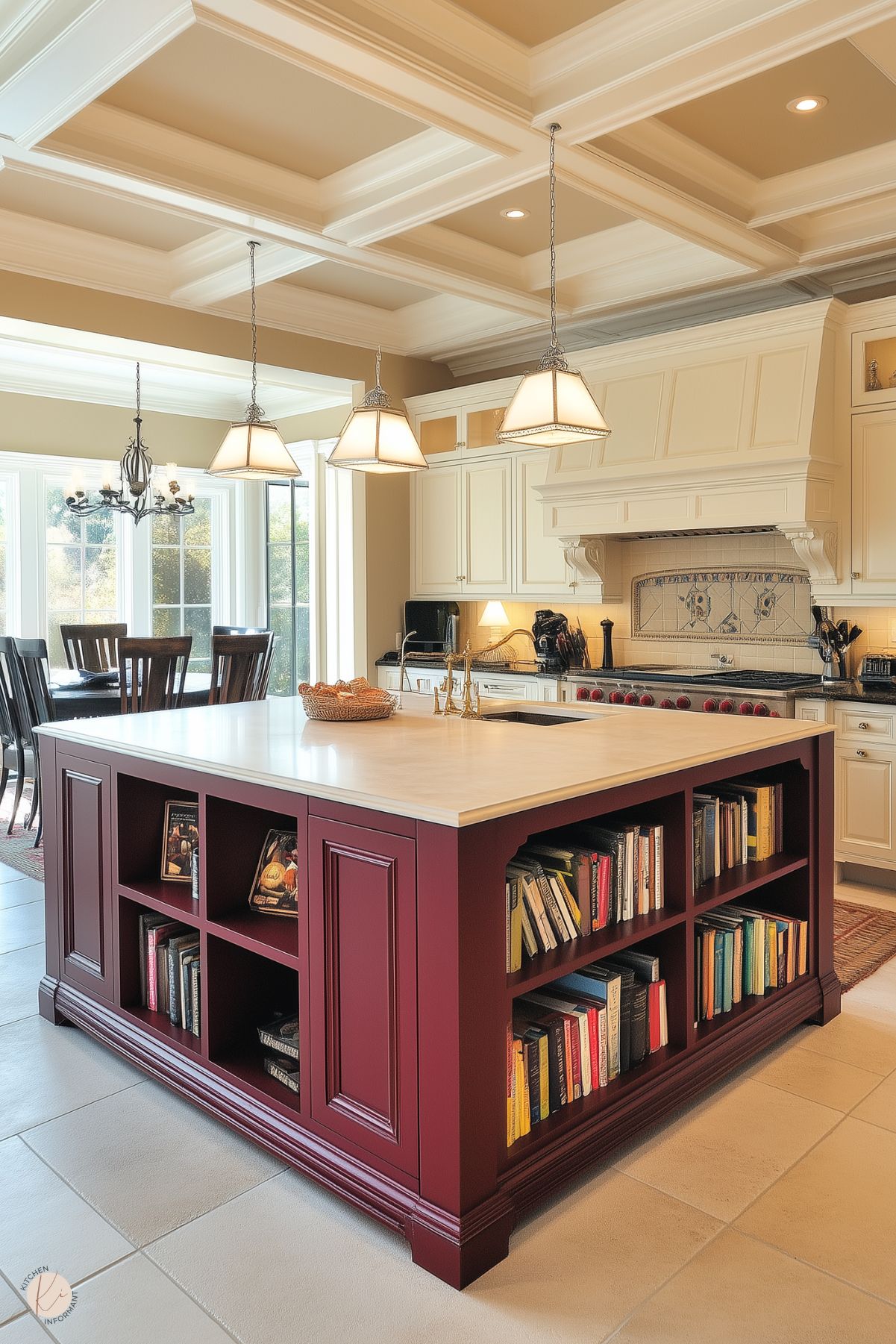
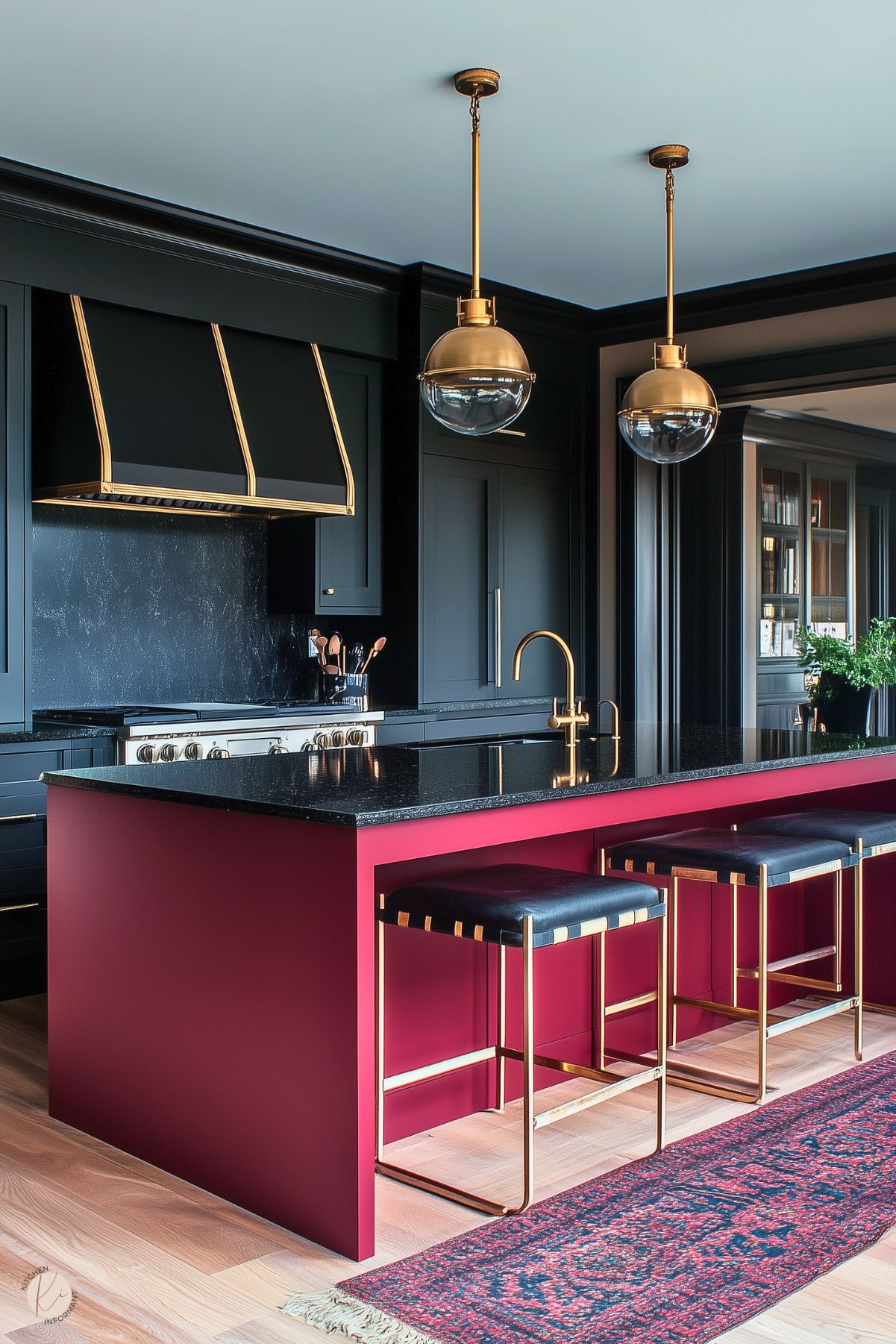
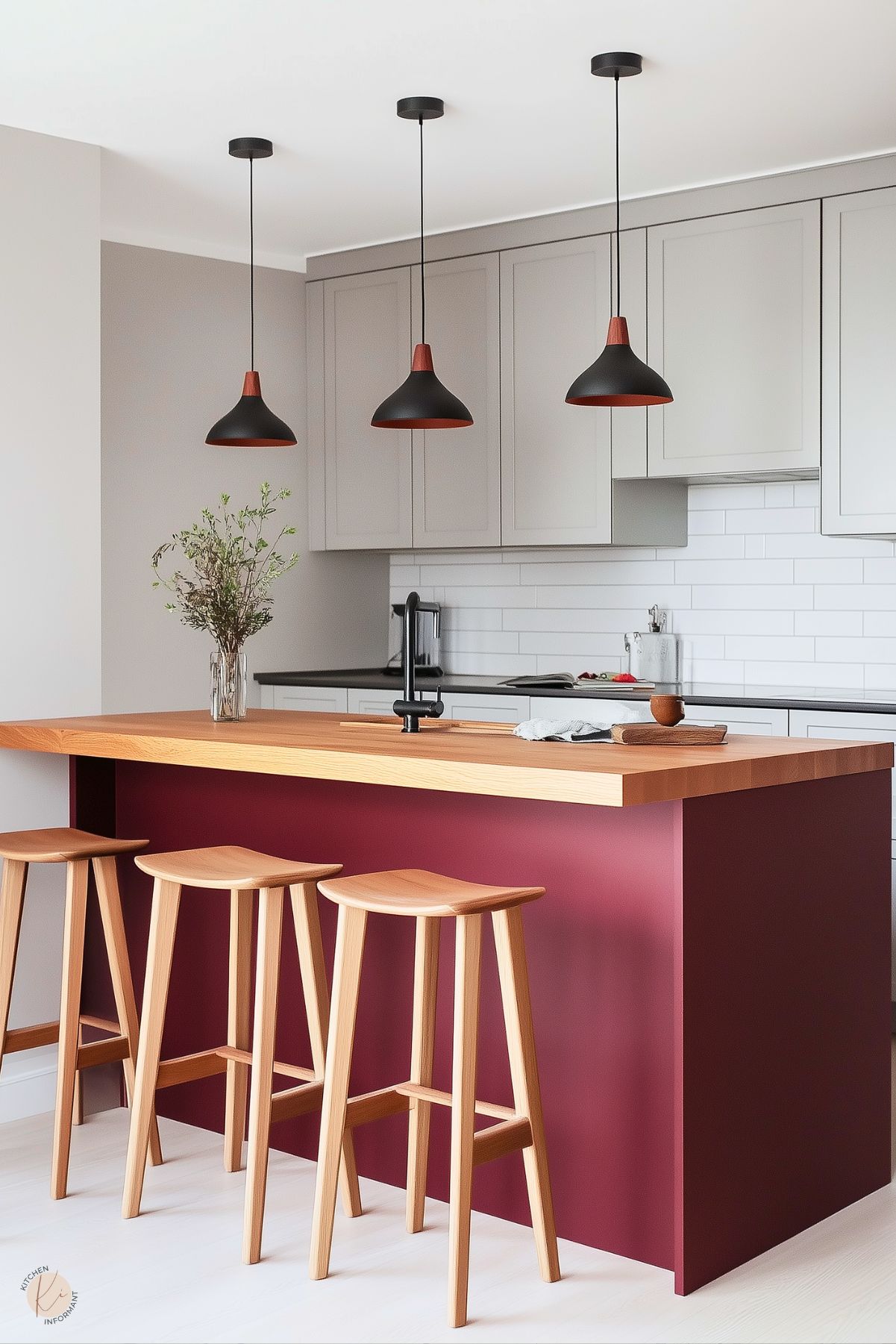
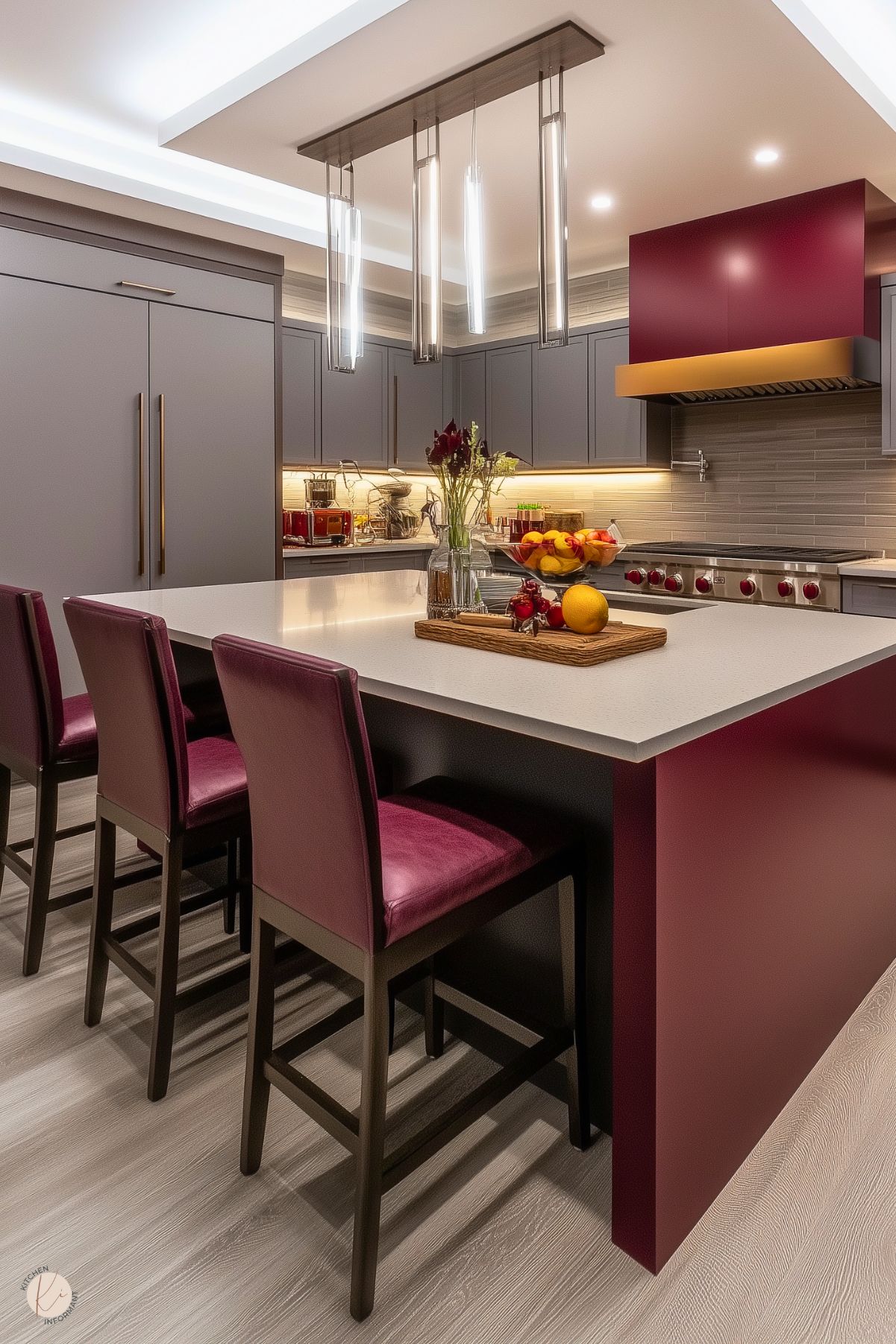
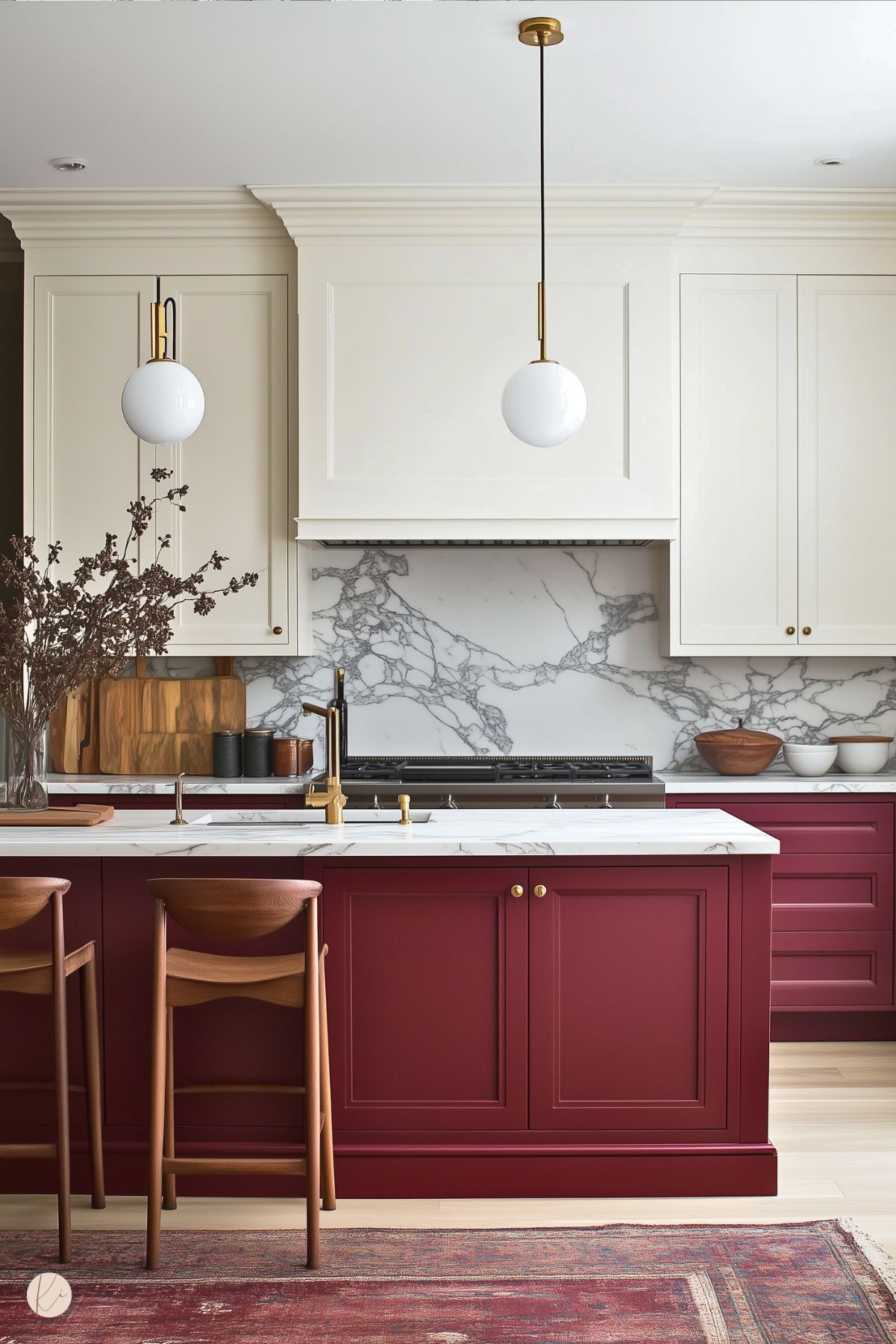
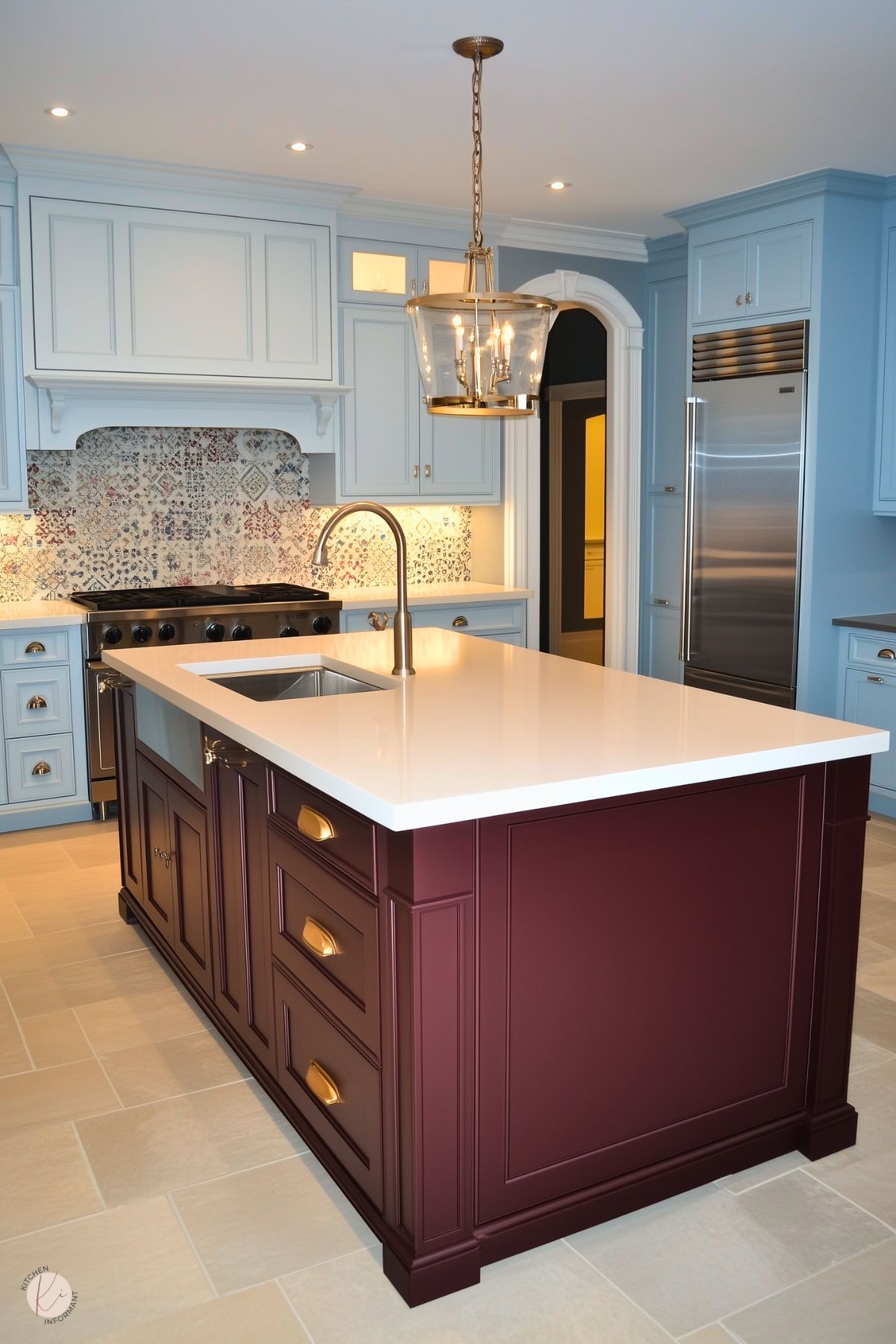
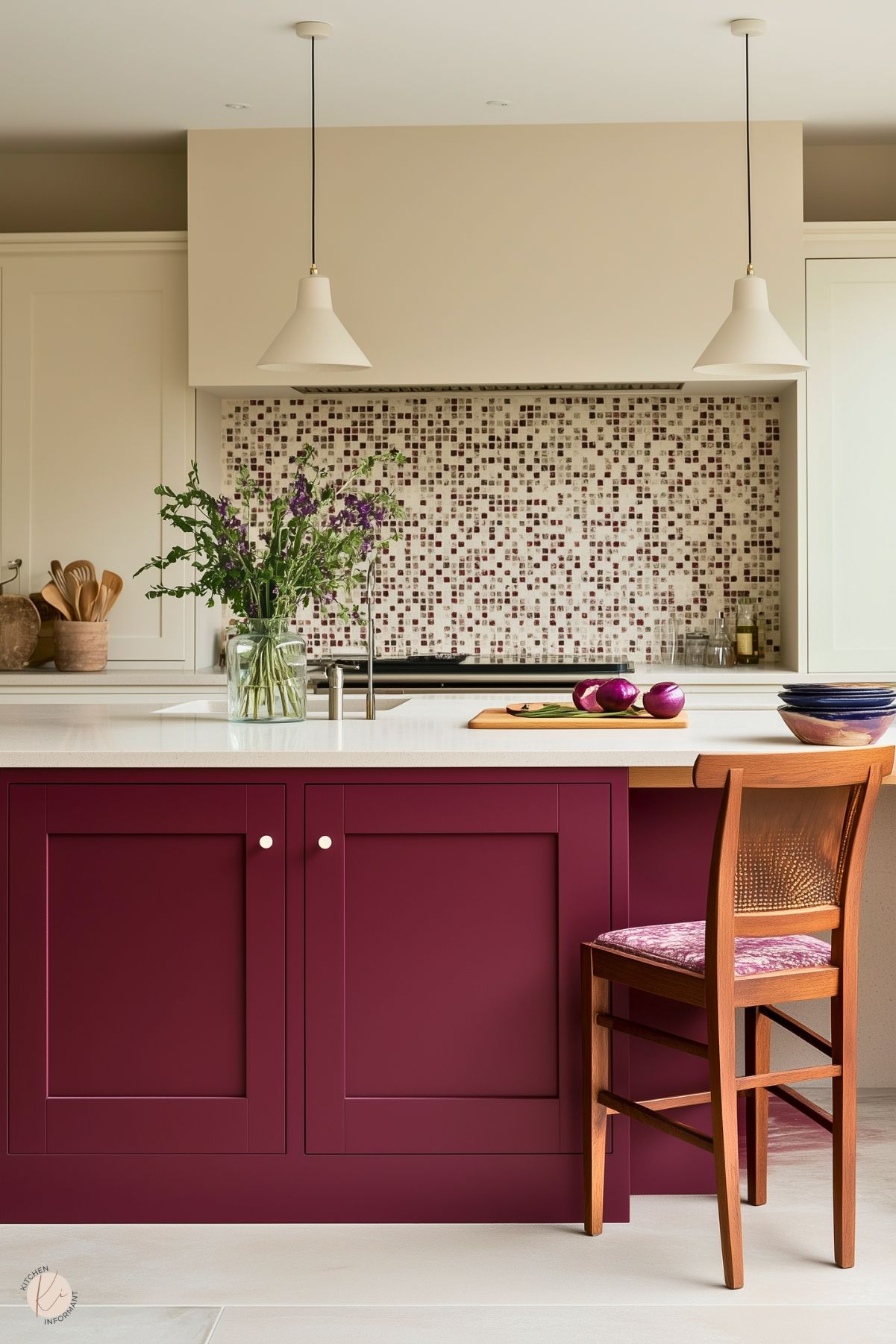
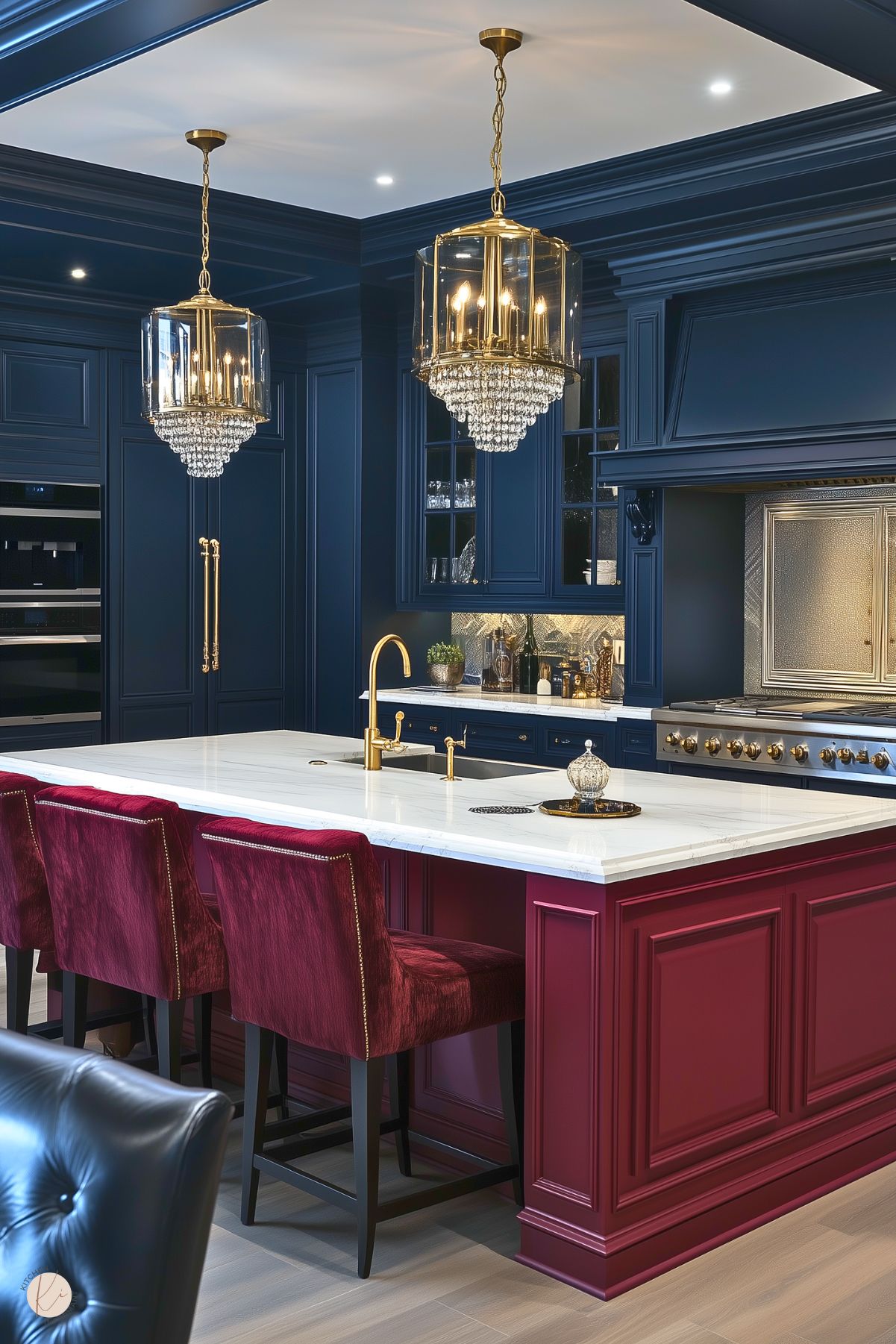
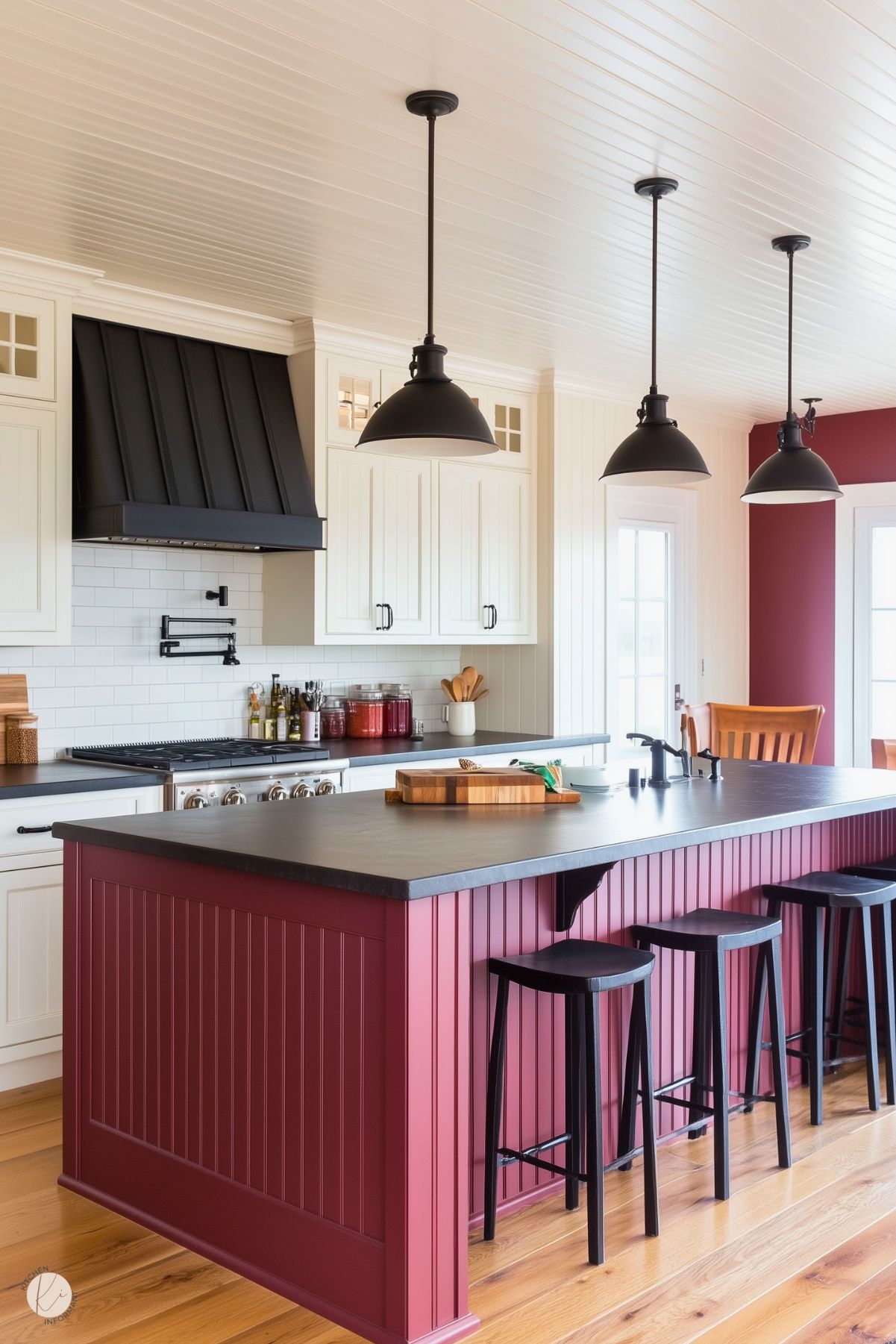
You May Also Like:
